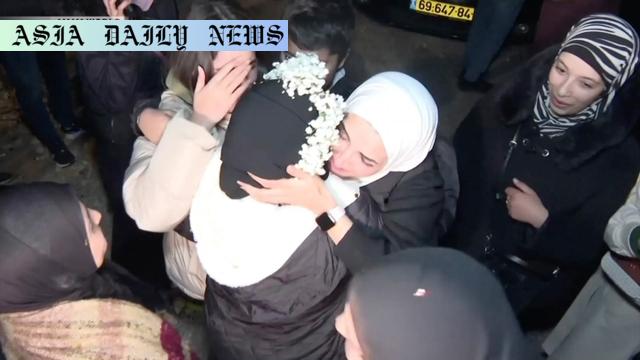Truce continues in Gaza between Israel and Hamas; hostages and prisoners exchanged, yet tense incidents reported.
Ceasefire between Israel and Hamas enters the second day, facing tense conditions.
Three hostages and 90 prisoners have been exchanged so far under the agreement.
Gaza health authorities report over 47,000 deaths since October 2023 fighting began.
The truce is set to last six weeks, with hostages and prisoners exchanged weekly.
Recent fatalities reported in Rafah underscore the fragile nature of the truce.

The Ceasefire Brings a Temporary Halt to Fighting
The ceasefire agreement between Israel and Hamas has entered its second day, providing temporary relief to the conflict-torn region of Gaza. The truce, which began on Sunday, has so far held without major reports of violence, in what is seen as a fragile yet crucial pause to weeks of relentless fighting. Both sides have initiated exchanges under the agreement, with Hamas releasing three hostages and Israeli authorities freeing 90 Palestinian prisoners.
This period of calm comes after intense fighting since October 2023, during which the Gaza Strip suffered widespread devastation. Gaza’s health authorities have reported a staggering 47,035 deaths, with more than 10,000 individuals still feared buried under debris from collapsed buildings caused by Israeli airstrikes. These numbers are expected to rise as emergency crews gain better access to the affected areas.
The Humanitarian Cost of Conflict
Many in Gaza are experiencing profound humanitarian challenges, with over a million people displaced and essential infrastructure like hospitals, schools, and residential areas reduced to rubble. Relief agencies have repeatedly called for a more extended and permanent ceasefire to enable aid delivery and recovery, but continued distrust between the parties remains a significant hurdle.
The truce agreement covers a six-week pause in fighting, during which Hamas is expected to release hostages in batches, while Israel will release additional prisoners off detention rosters. Among other provisions, Israeli troops are to withdraw from heavily congested urban areas of Gaza, offering a glimmer of hope to millions longing for peace.
Tensions and Challenges Persist
Despite relative calm, the situation remains tense, with sporadic reports of violence threatening to derail the agreement. Al Jazeera’s coverage reported the incident of Israeli forces fatally shooting two Palestinians in Rafah, southern Gaza. While no significant fighting has ensued, such incidents highlight the fragility of the ceasefire and the deep mistrust between the two sides.
It remains uncertain whether this ceasefire will translate into a more sustained peace. While both sides have agreed on the terms of a six-week truce, the history of repeated flare-ups in violence raises concerns about the long-term sustainability of such agreements. International mediators and humanitarian organizations continue to emphasize the importance of dialogue and negotiation to prevent further escalation.
Voices of Hope Amid Despair
As families on both sides reunite with loved ones following the first wave of hostages and prisoners’ release, diverse emotions fill the air. For some, there is relief and gratitude; for others, concerns linger over when the calm might shatter. For participants in the exchange, these brief moments highlight the pressing need for resolution in the region’s prolonged crisis.
Neighboring countries like Qatar, which played a role in facilitating the agreement, urge both parties to adhere to the truce, seeing this as a stepping stone to broader peace talks. However, observers maintain a cautious outlook, reflecting the challenges of navigating deep-seated animosities and political complexities that have plagued the region for decades.
Looking Ahead
This ceasefire offers a glimpse of what could be achievable through collective efforts and compromise. It serves as a reminder of the human cost of prolonged conflicts and the urgent necessity for peace. The international community continues to call for greater involvement to ensure that peace remains sustainable. For now, the people of Gaza and Israel await with bated breath, hoping this fragile truce holds longer as steps toward lasting peace are pursued.



Commentary
Reflecting on the Fragility of Ceasefires
The ongoing ceasefire between Israel and Hamas represents an essential but fragile pause in one of the most prolonged and severe conflicts in recent history. While the halt to major hostilities is a welcomed respite for those on the ground, the sustainability of such agreements is always riddled with uncertainties. The deaths reported in Rafah highlight just how delicate the situation remains, even as headlines focus on exchanges of prisoners and hostages.
The humanitarian toll revealed in recent weeks is staggering, and it underscores the urgent need for not just short-term solutions but comprehensive pathways to peace. The devastation faced by Gaza’s civilian population must be a wake-up call for international communities and stakeholders in conflict resolution. Anything less than sustained global attention will only allow history to repeat itself.
What Lies Ahead for All Sides
This truce, while promising, also presents challenges. Will six weeks of relative calm kindle a renewed commitment to dialogue? Or will it simply delay the inevitable resurgence of fighting? These are questions that haunt both the negotiators and the affected populations. The international community has a moral obligation to support stabilization efforts and ensure that this moment of peace becomes a cornerstone for broader reconciliation.
In the end, the success of this ceasefire lies in the sincerity of each party’s commitment. Beyond the political posturing and exchanges, there must be a collective will to move toward healing and understanding. Whether that will exists remains to be seen, but the world must act with determination to turn this fragile truce into a lasting peace.